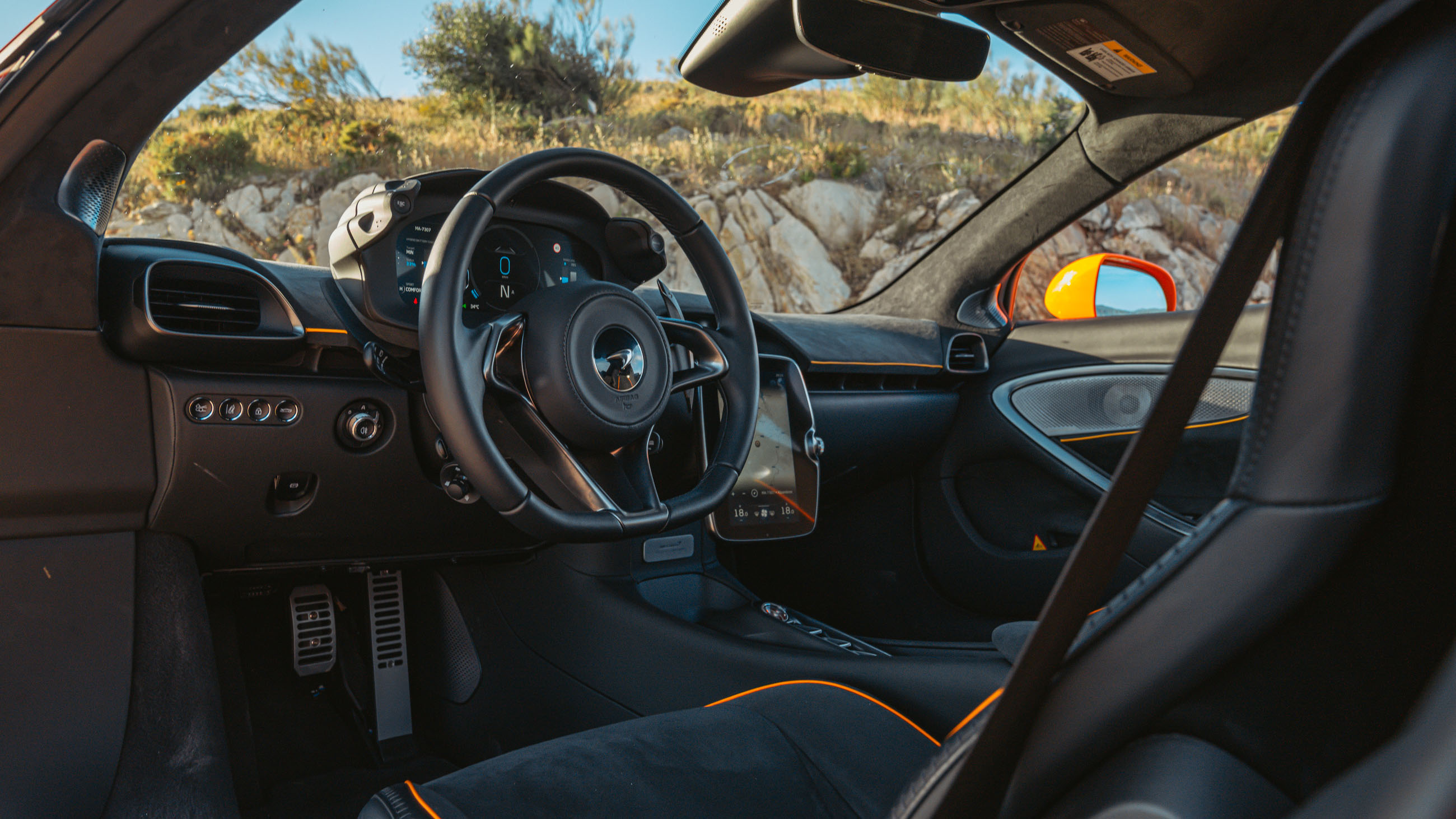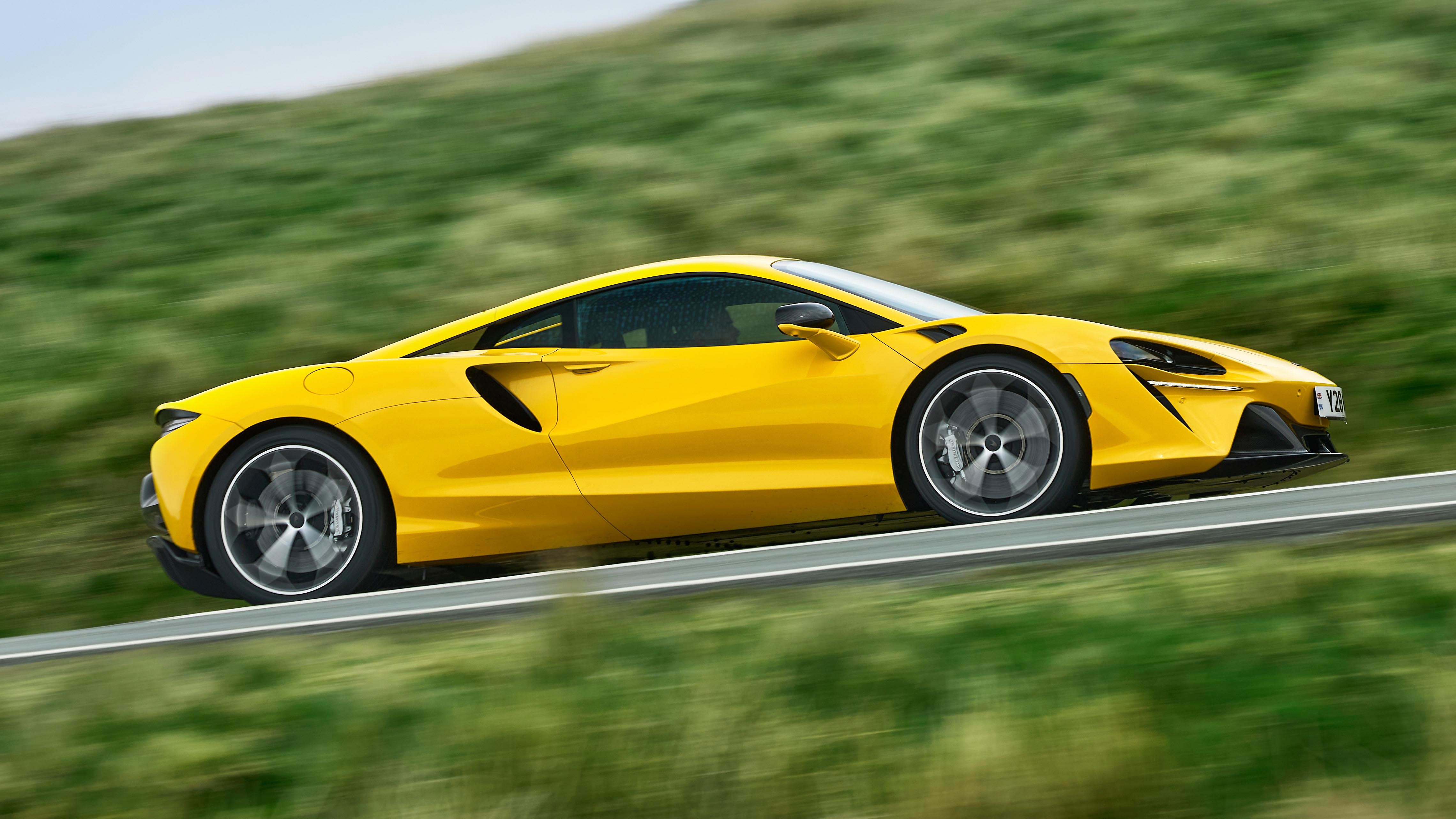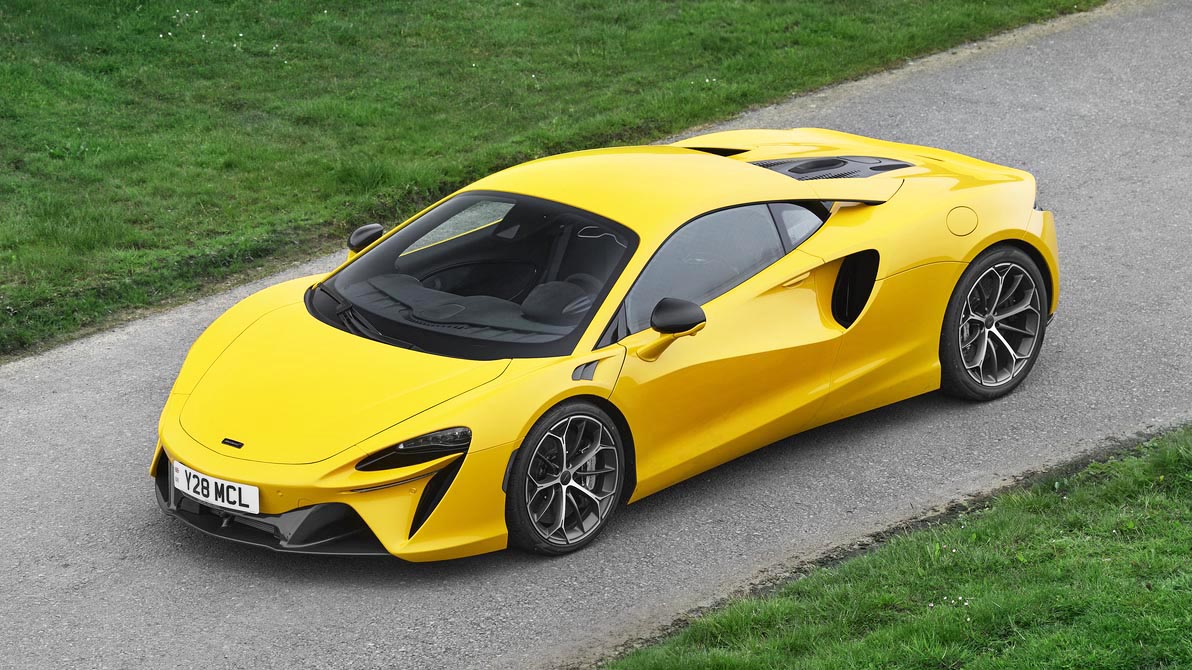
Buying
What should I be paying?
When McLaren first announced the Artura, it was priced at £182,500. By the time it arrived it’d gone up to £189,200. As of summer 2024 the entry price has soared above the £200k barrier, to £201,400.
And it’s not like that’s what anyone is going to be paying. McLaren has not lost its ability to charge for things: a sports exhaust is £4,700, to have your brake calipers painted is £1,570, the comfort seats are £3,300. And that’s before you get on to the various carbon fibre options (dead easy to rack up £10-20k there). McLaren does do that very well indeed at its new composites centre in Sheffield, but none of it comes cheap, it doesn’t save much (if any) weight, and it’s not worth much come trade-in time.
Which options are worthwhile?
Do have a close look at the £6,800 Technology Pack though, which brings adaptive LED headlights, radar cruise and lane departure, 360 degree park assist and a 12-speaker Bowers and Wilkins hifi. That last is the best we’ve listened to in a McLaren. Still doesn’t have enough surround, but richer toned and more balanced than before.
Will it break down?
McLaren hasn’t had the best rep for reliability, though, and that – plus the well documented depreciation of some models – does mean you need to go into ownership with your eyes open. However, McLaren includes a five-year warranty (six for the hybrid’s battery), and a three-year service plan.
That said, the Artura has consistently been the best-finished, most niggle-free McLaren we’ve ever tested. Though the original launch cars were plagued with software faults, the Arturas we’ve tested in the UK are free from error messages, errant warning bongs or any ‘fail to proceed’ moments, which wasn’t true of early 12Cs or the Sports Series 570GT we ran in the Top Gear Garage. What’s more, material quality and in-built tech feels like it’s also moving upmarket at McLaren.
Featured

Trending this week
- Car Review
BMW iX3






